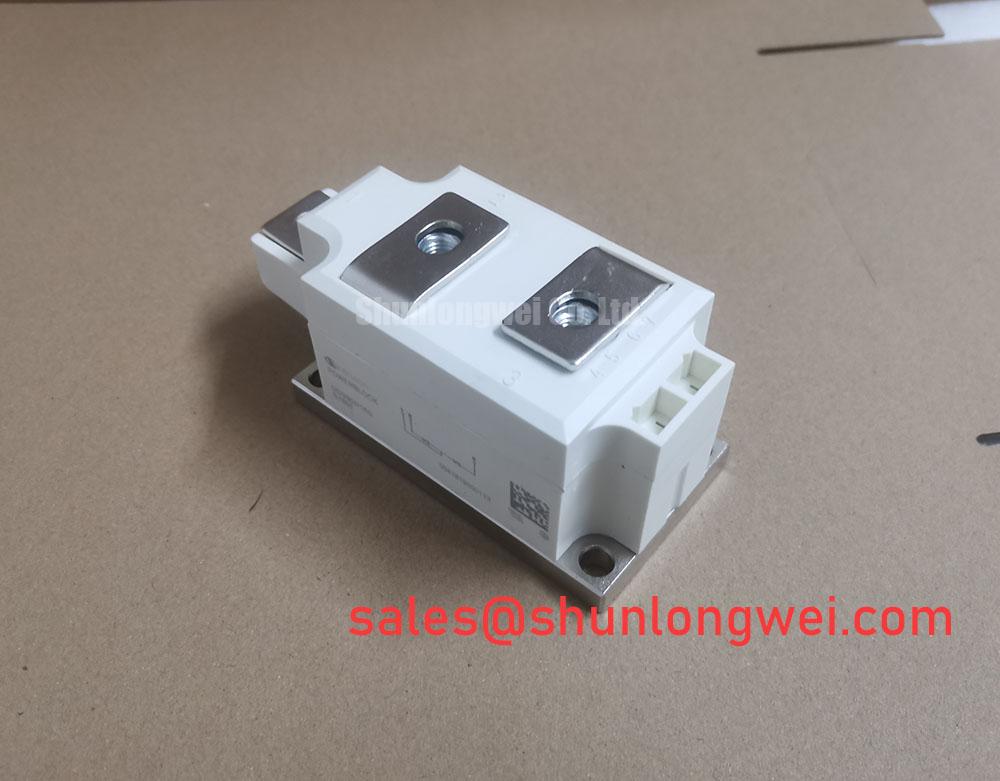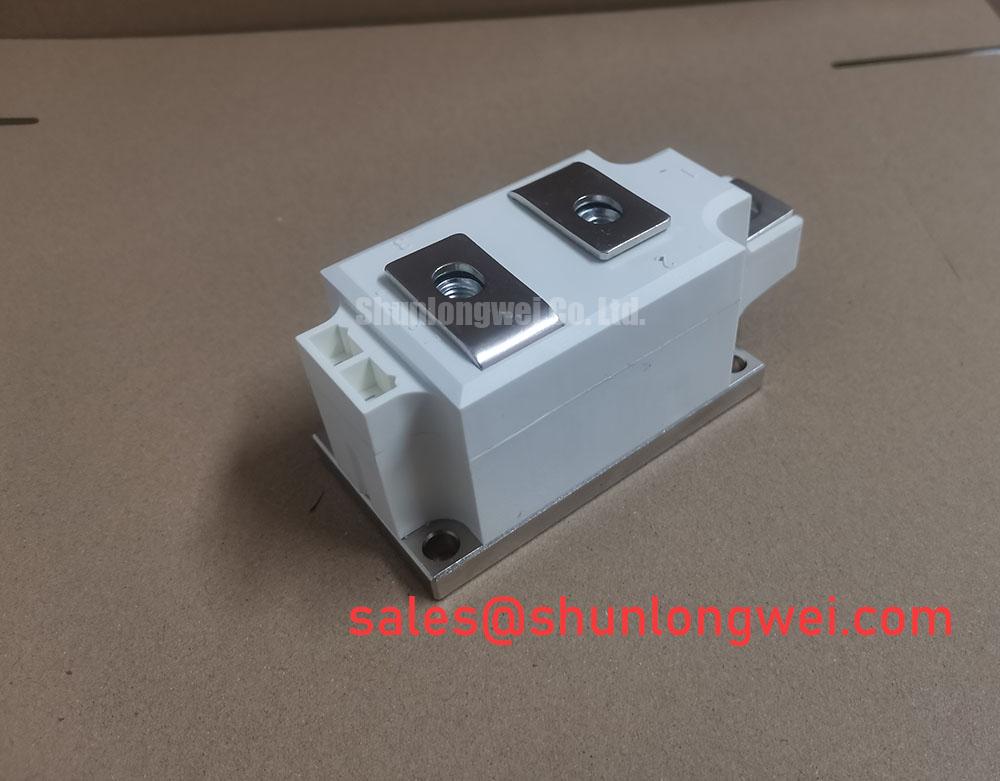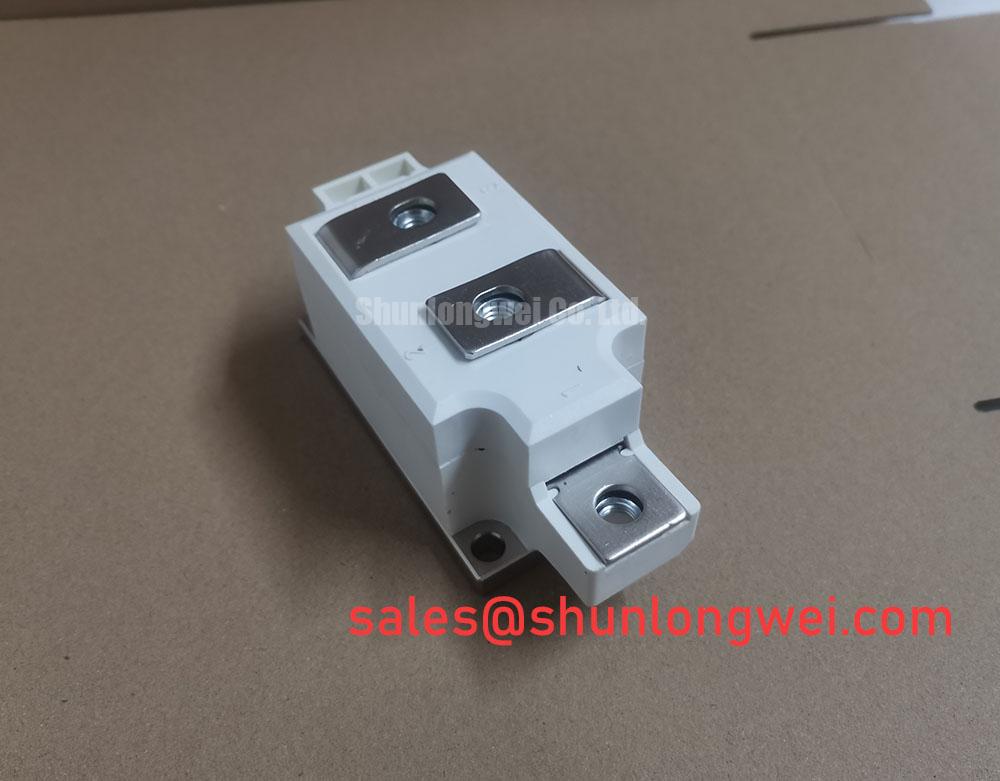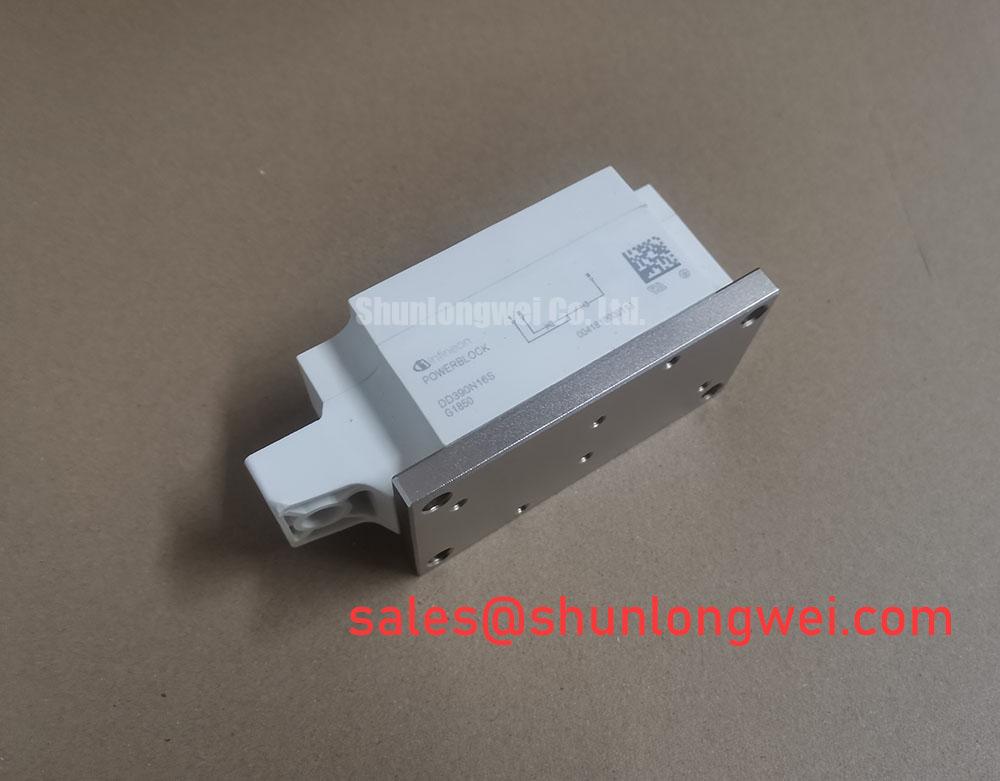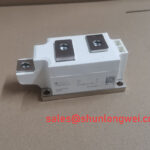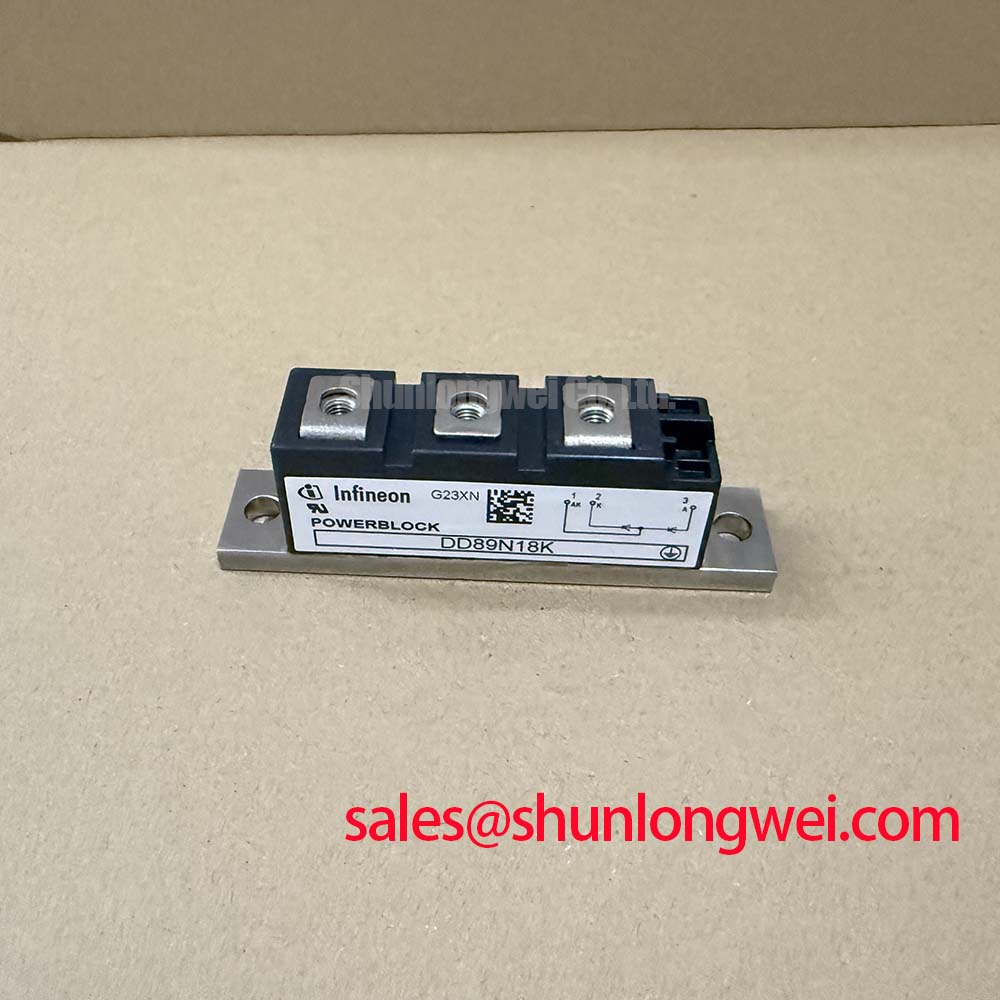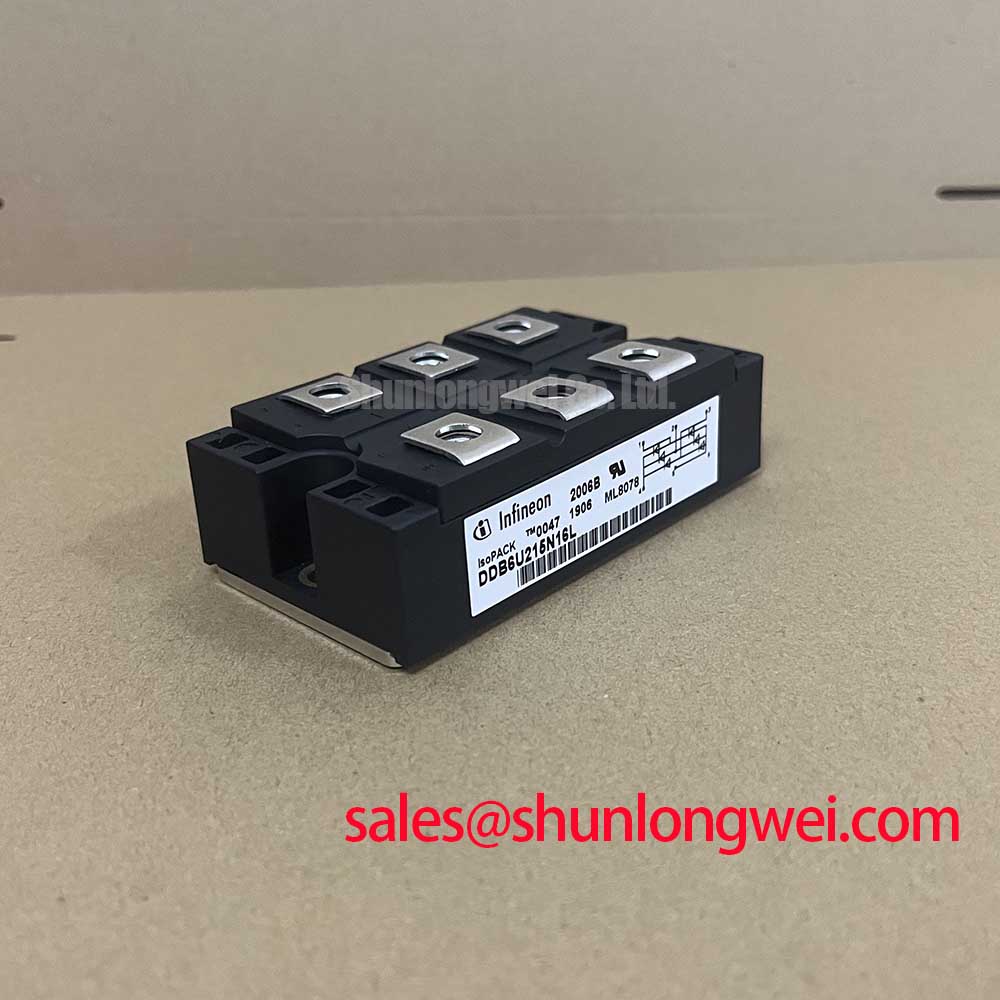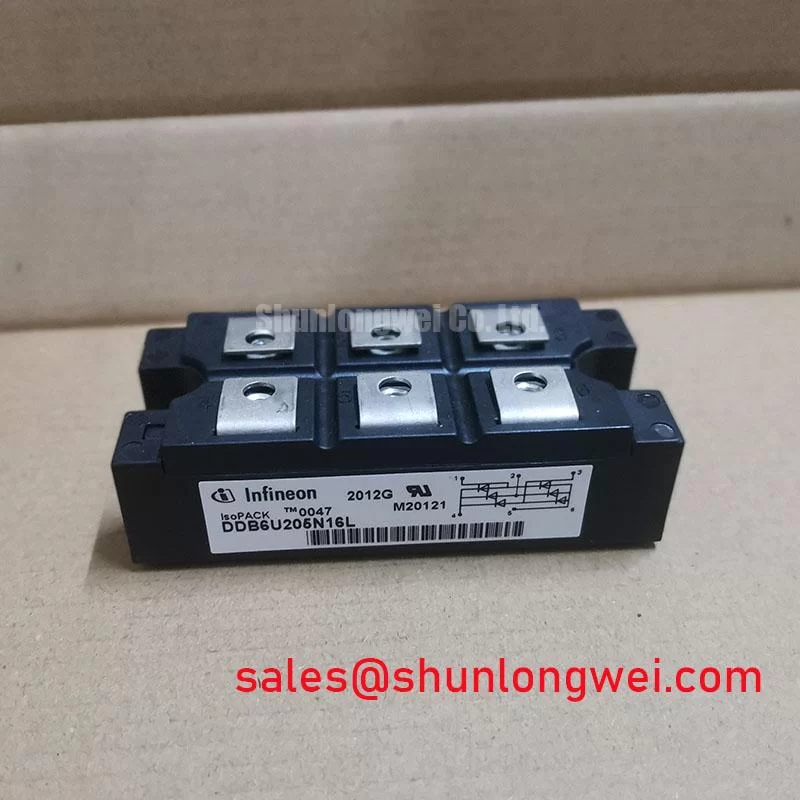Content last revised on November 19, 2025
DD390N16S | 1600V, 390A High-Reliability Diode Module for Industrial Power Systems
An Engineering-Centric Overview of the DD390N16S Diode Module
The Infineon DD390N16S is a high-power diode module engineered with pressure contact technology to deliver superior thermal performance and extended operational life in demanding industrial applications. Featuring robust specifications of 1600V | 390A | Rth(j-c) 0.07 K/W, this module provides two key engineering benefits: enhanced long-term reliability and superior thermal cycling capability. It directly addresses the need for components that can withstand harsh operational conditions without degradation by eliminating solder fatigue, a primary failure mechanism in conventional power modules. For high-power rectification stages in 690V industrial drives prioritizing operational lifetime, this 1600V pressure-contact module is the optimal design choice.
Application Scenarios & Value
System-Level Benefits in High-Power Industrial Rectification
The DD390N16S is engineered for high-stress applications where reliability and longevity are non-negotiable. Its primary value is demonstrated in the front-end rectification stages of high-power systems such as industrial motor drives, uninterruptible power supplies (UPS), and welding equipment. Consider a large-scale conveyor system powered by a variable frequency drive (VFD). The initial motor startup demands a massive inrush current, which can stress rectifier diodes to their limits. The DD390N16S, with its high forward surge current (I_FSM) rating of 6100 A, comfortably manages these transient events without degradation. Furthermore, its pressure contact design ensures that the thermal and mechanical stresses from repeated power cycles do not lead to solder joint fatigue, a critical factor for systems operating 24/7. This robust construction directly translates to reduced maintenance, less downtime, and a lower total cost of ownership for critical industrial infrastructure. For systems that require phase control in addition to rectification, a thyristor/diode module like the SKKD162/16 offers an alternative topology.
Key Parameter Overview
Decoding the Specs for Enhanced Thermal Reliability
The specifications of the DD390N16S are a direct reflection of its intended use in high-reliability power conversion. The following table highlights key parameters and interprets their engineering significance, providing a clear link between the datasheet values and real-world system performance.
| Parameter | Value | Engineering Significance |
|---|---|---|
| Repetitive Peak Reverse Voltage (V_RRM) | 1600 V | Provides a substantial safety margin for applications connected to 690V AC lines, protecting against voltage transients and enhancing system robustness. |
| Average Forward Current (I_FAVM) | 390 A (T_C = 100°C) | Indicates the module's capacity for high continuous current handling, making it suitable for multi-hundred kilowatt power systems. |
| Thermal Resistance, Junction to Case (Rth(j-c)) | 0.070 K/W (per Diode) | This extremely low value signifies highly efficient heat transfer from the silicon die to the heatsink. For a designer, this means lower operating junction temperatures, which is the cornerstone of reliability. It allows for more compact heatsink designs or higher power output for a given heatsink size. |
| I²t Value | 186 x 10³ A²s | Defines the non-repetitive surge energy handling capability. This high I²t rating is crucial for correctly sizing fuses to protect the module during fault conditions without nuisance tripping during normal operation. |
| Isolation Voltage (V_ISOL) | 3000 V (RMS, 50 Hz, 1 min) | Ensures high galvanic isolation between the live electrical circuit and the module's baseplate, a critical safety requirement conforming to standards like IEC 61800-5-1. |
Download the DD390N16S datasheet for detailed specifications and performance curves.
Technical Deep Dive
A Closer Look at Pressure Contact Technology for Long-Term Reliability
The defining feature of the DD390N16S is its use of Infineon's pressure contact technology. Unlike conventional modules that rely on soldered connections to bond the silicon die to the baseplate, this design uses a precisely calibrated mechanical pressure system. This seemingly simple change has profound implications for the module's operational lifespan. What is the primary benefit of its pressure-contact design? Enhanced long-term reliability by eliminating solder fatigue.
Solder layers are susceptible to cracking and degradation over time due to the thermal mismatch between the silicon die and the copper baseplate. Every time the module heats up and cools down, these layers expand and contract at different rates, creating mechanical stress. This is analogous to bending a paperclip back and forth; eventually, it will break. In a power module, this failure leads to increased thermal resistance and, ultimately, catastrophic failure. The pressure contact design completely bypasses this failure mode, resulting in a module with significantly higher power cycling capability and a more predictable, extended service life, which is a critical advantage in capital-intensive industrial equipment.
Frequently Asked Questions (FAQ)
How does the pressure contact design of the DD390N16S impact system assembly and mounting?
The pressure contact design requires a specific mounting procedure with a defined clamping force to ensure optimal electrical and thermal contact. It is essential to use the manufacturer-specified mounting clamps and follow the recommended torque settings to achieve the datasheet-level performance and reliability. This differs from standard modules that are simply screwed onto a heatsink.
What is the significance of the 1600V V_RRM rating for an engineer designing a 690V AC drive?
For a 690V AC line, the peak line-to-line voltage is approximately 975V. A 1600V rating provides a robust safety margin (typically a factor of 1.6 or more), which is critical for accommodating voltage spikes and overshoots caused by line inductance or fast switching events, thereby ensuring the long-term reliability of the rectifier stage.
How does the low Rth(j-c) of 0.07 K/W directly influence heatsink selection?
A lower thermal resistance means that for every watt of power dissipated, the junction temperature rises by a smaller amount. This high efficiency in heat transfer allows engineers to either use a smaller, less expensive heatsink for a given power level or to push more current through the module while staying within safe temperature limits, thus increasing power density. For a deep dive into this topic, explore why Rth matters for thermal performance.
Can the DD390N16S be used in parallel to achieve higher current ratings?
Yes, diode modules like the DD390N16S can be connected in parallel. However, achieving balanced current sharing is critical. This typically requires careful attention to symmetrical busbar layout to equalize stray inductances and may involve matching diodes based on their forward voltage drop (V_F) characteristics to prevent one module from carrying a disproportionate share of the current.
Is this module suitable for freewheeling diode applications in an inverter?
While the DD390N16S has excellent specifications for rectification, its suitability as a freewheeling diode depends on the inverter's switching frequency and the characteristics of the active switch (e.g., an IGBT). For high-frequency applications, a dedicated freewheeling diode with optimized reverse recovery characteristics (Q_rr, t_rr) would typically be required to minimize switching losses. This module is best suited for line-frequency rectification.
An Engineer's Perspective
From a design engineering standpoint, the DD390N16S is not just a high-current diode; it's a strategic component for building systems with a long design life. Its core advantage—the elimination of solder fatigue through pressure contact—moves the conversation from simple component cost to the total cost of ownership. By engineering out a known failure mechanism, it provides a level of dependability that is essential for applications where system failure results in significant financial or operational consequences. When the design objective is maximum uptime and resilience against thermal cycling stress, the DD390N16S presents a compelling engineering solution backed by robust thermal and electrical specifications.


